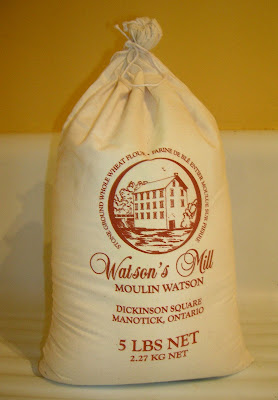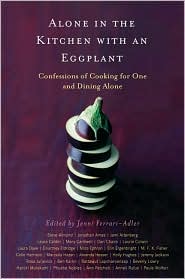 To forage for mushrooms on the forest floor is to connect with your inner wild pig because to find these elusive treats you must get down on the ground, your eyes and nose pointed earthward, and get dirty. Very dirty.
To forage for mushrooms on the forest floor is to connect with your inner wild pig because to find these elusive treats you must get down on the ground, your eyes and nose pointed earthward, and get dirty. Very dirty.The prey you are stalking may be silent and still but hunting them requires as much skill and patience – maybe even more – as it takes to bring down big game.
In your porcine state, you will happily spend hours mutely scrambling down misty hillsides and through damp woods, carefully rooting under fallen leaves and nosing into dark crevices – all in your quest to coax these masters of camouflage out of their subterranean lairs.
You will brave insects, incur stings and scratches and stare down all manner of woodland creatures and creepy crawlies. You will willingly embrace rot and decay because mushrooms are nature’s necrophiles – and wherever there is death on the forest floor, you will find them thriving.
Deep in the woods, your primitive animal imagination will thrive in a fairy world of toadstool rings, a magical place where fungi’s modern scientific labels are discarded in favour of more whimsical identifiers such as hawk’s wing, cow’s nose, witch’s butter, chicken of the woods, slippery caps and flames of the forest.
You will find mushroom hunting a largely silent endeavour, broken only by the occasional grunt and groan that is, until you find what you’re looking for and then you will hear your primal yell echo off the surrounding rocks and trees.
There are few activities that bring out the primitive hunter-gatherer in us more than foraging for edible fungi and you will want to devour the earthy fruits of your labour soon as possible. For this reason, wild mushrooms are best enjoyed at the edge of the woods, if you can manage it, prepared as simply as possible on a Coleman stove and served picnic-style.
If you absolutely must wait until you get home, spread your haul out on a tea-towel, on the kitchen counter, and leave it for an hour or so to give all the tiny creatures residing in fungal gills and folds a chance to crawl away into the corners of your kitchen. My friend Kerry taught this very effective 'shroom cleaning method! After that, simply brush off any large chunks of remaining soil or forest matter and start cooking. Whatever you do, don’t go all hygienic and try to wash the mushrooms thoroughly. This will ruin them and, considering the primal effort you put into obtaining them, any concerns about swallowing a bit of dirt would be a bit silly at this point.
Whether you’re eating mushrooms out in the woods or at home, there is one critical rule of safety you should always adhere to: never eat a wild mushroom you can’t confidently identify. Only a few hundred of the world’s thousands of varieties of fungi are actually edible. Some of them are seriously harmful and eating them can lead to a swift, painful death which ranks wild mushroom dining up alongside sampling fugu is an extreme gastro-sport. This definitely helps explain why so many mycological societies darkly call their end-of-season member soirees "survivors" banquets.
In my more adventurous foraging days, I lost my nerve a couple of times while staring at a seemingly innocent shroom and second-guessing my identification. Of course, this doesn’t stop folks like me from going a little hog-wild and heading out into the hills every season.
When I get a good batch, usually of chanterelles, eating them fried up in olive oil and butter and served on toast or tucked into a fluffy omelet is usually enough to satisfy me until I can cook up the rest of my haul in more involved dishes such as soup, risotto or a rich sauce for roast beef, poultry or game. My measurements for the following dish aren’t very exact because I eyeball the ingredients in my rush to get my wild mushroom fix.
Mushrooms on Toast
1-2 Tbsp extra virgin olive oil
10 -12 ounces mixed wild mushrooms (chanterelles, porcini, matsutake, oyster, etc.) roughly chopped
1 tsp garlic, minced + 1 whole clove garlic, sliced in half
1 tsp fresh thyme, roughly chopped
Salt
Freshly ground black pepper
1 – 2 Tbsp butter
1 Tbsp medium-dry sherry
Slices of sourdough or other crusty bread.
In a large frying pan, heat the oil. Add the mushrooms to the pan, making sure not to crowd or layer them. Toss the mushrooms to coat with oil. Add garlic and fresh thyme and toss again. Add a pinch of salt and ground pepper. Sauté gently for 3-5 minutes. If mushrooms begin to dry out, add a bit more oil. Add the butter. When it is melted, stir to incorporate. To finish, add the sherry. If you would like the mixture to be creamier, you can toss in a couple of tablespoons of water, or chicken broth if you have it handy, and let mixture simmer for 1 or 2 minutes longer. Adjust salt and pepper as necessary, to taste.
Note: mushrooms are very accommodating and you can make variations on this dish by adding shallots instead of garlic, substitute dry white wine or the juice of half a lemon for the sherry, throw in a handful of chopped Italian parsley and/or a few red chili flakes like Jamie Oliver does in his book Jamie at Home.
While the mushrooms are cooking, slice the bread into thick pieces. Rub one side of each piece with the slice of garlic. Toast the bread lightly under the grill (or over the stove if you are preparing this outside). If you don’t want toast, you can leave the toasting step out. Put each slice on a plate, spoon the mushrooms over them, let out a big snort and start scarfing them down!























